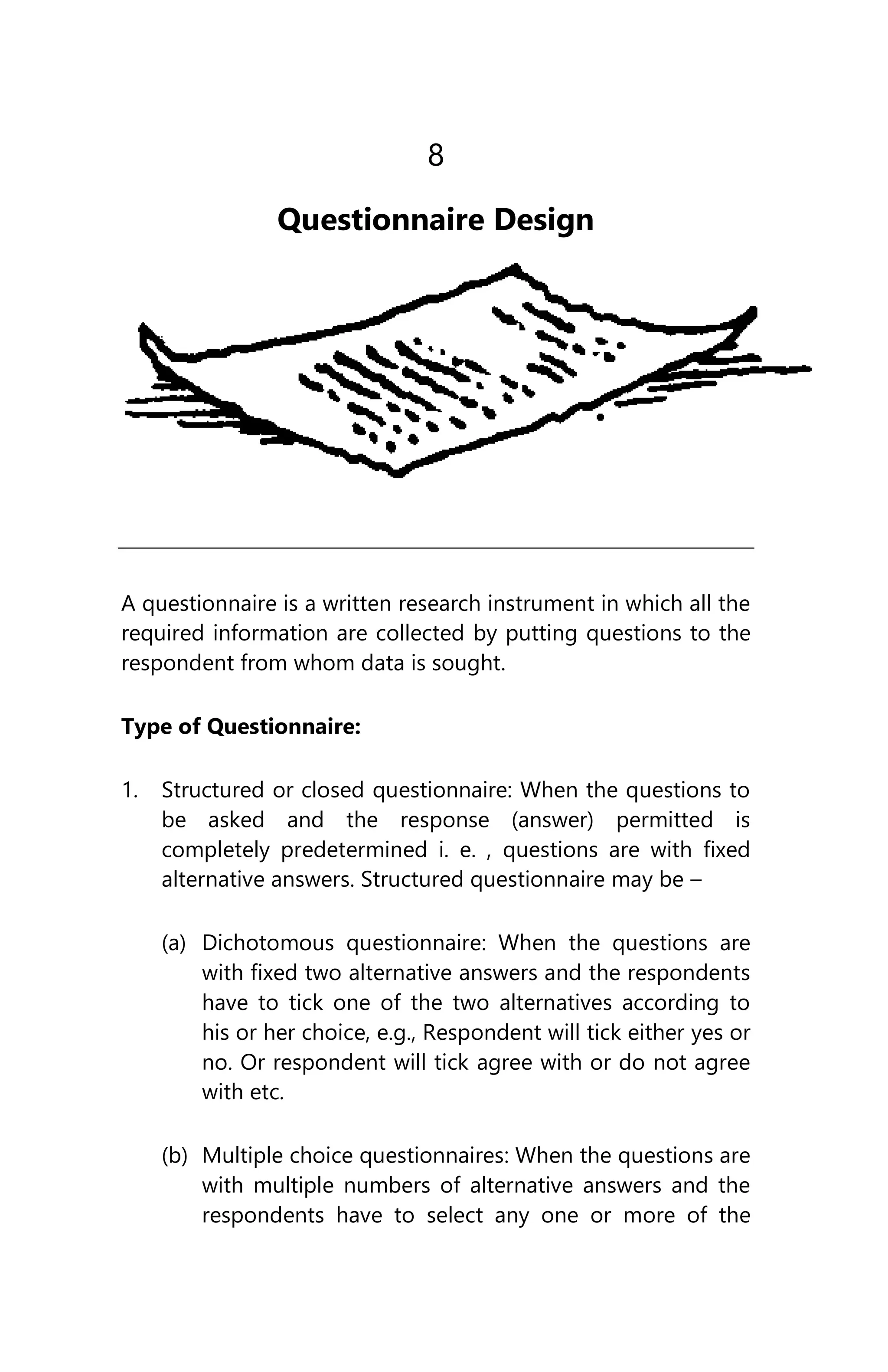A questionnaire is a written research instrument used to collect required information from respondents by asking them questions. There are two main types of questionnaires: structured questionnaires with predetermined closed-ended questions and response options, and unstructured questionnaires that allow open-ended responses. When designing a questionnaire, it is important to pre-test it with a small group to check for clarity, length, question order effects, and to ensure the questions will elicit useful responses.


![Reserch Methodology-56
the aspects to be examined and ending with interpretation of
the results.
The steps required to design and administer a questionnaire
include:
I. Defining the Objectives of the survey
II. Determining the Sampling Group
III. Writing the Questionnaire
IV. Administering the Questionnaire
V. Interpretation of the Results
Parts of a questionnaire
1. Title: the title should be clear and brief
2. Introductory remarks: Here the researchers describe
about the purpose of the study, what is expected from the
research subject and assurance to the research subject
is given about confidentiality of the data.
3. Instruction: Instruction should be given how to answer the
questions.
4. The contents: The questions.
5. The ending: The ending of the questionnaire is to be
marked with thanks to the research subject.
6. Signature of the respondent with date: if possible,
signature of the subject is to be taken with date
General Considerations
(Quality of a good Questionnaire)
[Write short notes on: Qualities of a good research
questionnaire, (BSMMU, MD Radiology, January, 2010)]
Whether your questions are open or closed format, there are
several points that must by considered when writing and
interpreting questionnaires:
1. Clarity: Questions must be clear, succinct, and
unambiguous.](https://image.slidesharecdn.com/ch8questionnairedesign-231105180939-42f16899/75/Questionnaire-Design-3-2048.jpg)


